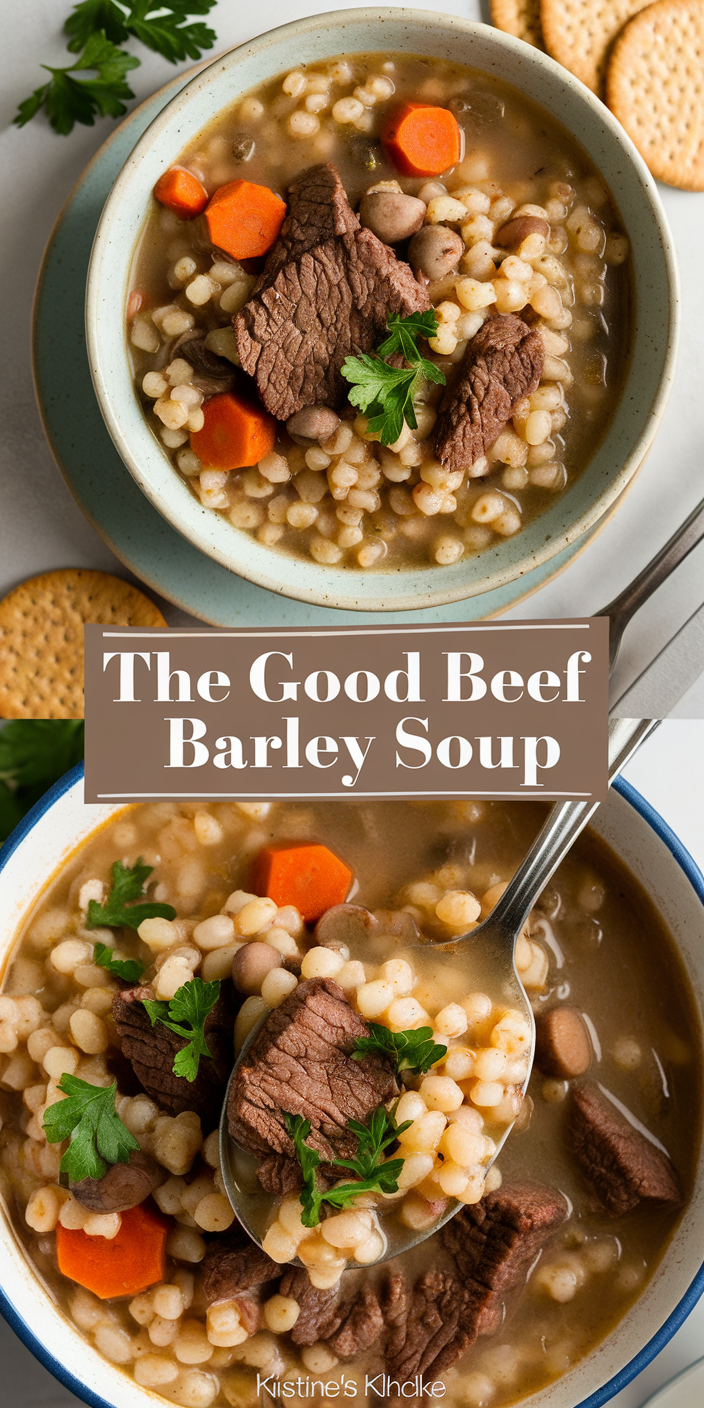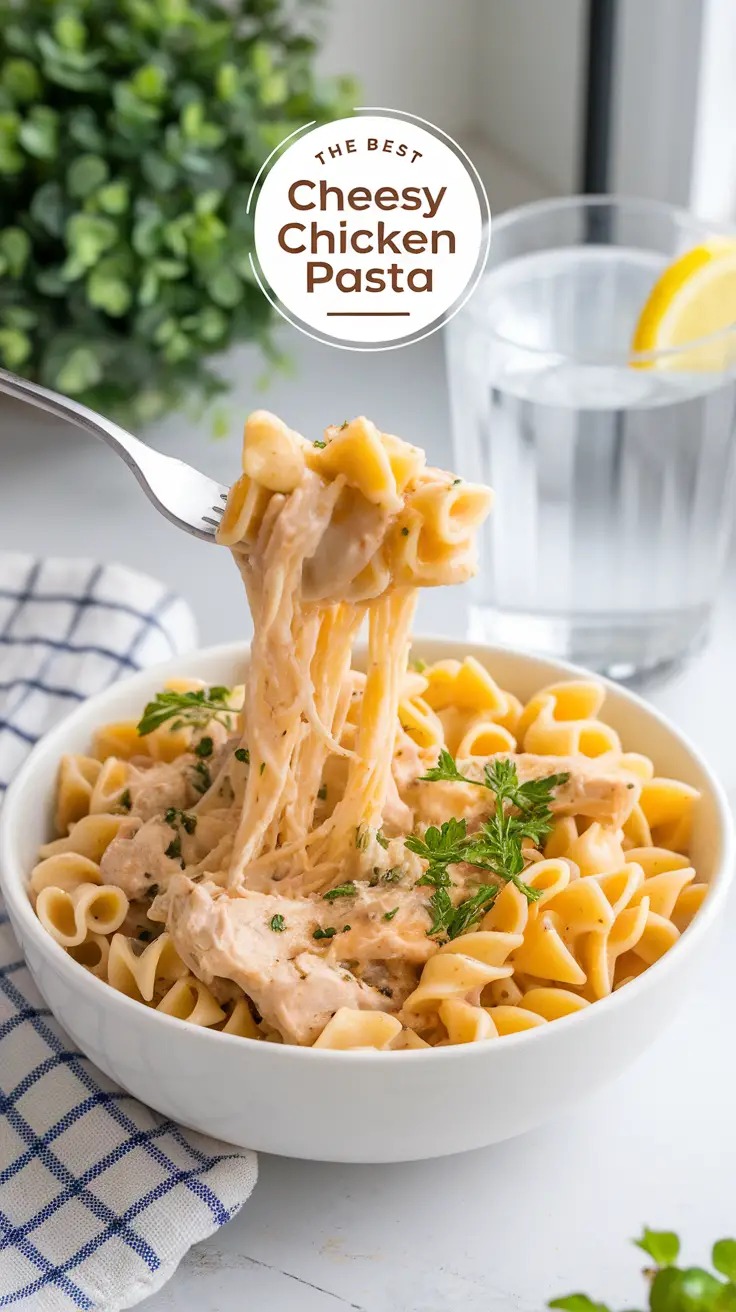Makloubeh, a cherished dish in the heart of the Middle East, is as much a feast for the eyes as it is for the stomach. The name “Makloubeh” (also spelled “Maqlooba” or “Maklouba”) translates to “upside down,” a reference to the dramatic way the dish is served after being flipped over from the pot onto a serving dish. This iconic meal blends the rich, fragrant flavors of chicken, potatoes, and vegetables with the comforting texture of aromatic rice, offering a perfect representation of Middle Eastern cuisine. Whether you call it Makloubeh, Maqlooba, or Maklouba, the essence of this dish remains unchanged: a perfect combination of rice, meat, and vegetables cooked together in one pot to create an unforgettable meal.
What Is Makloubeh?
Makloubeh is a popular Middle Eastern dish, often prepared during special occasions and gatherings. It has deep roots in Levantine countries, particularly in Jordan, Lebanon, Palestine, and Syria. While recipes and ingredients may vary from region to region, the core components of this dish include rice, meat (typically chicken or lamb), vegetables, and spices, all cooked together in one pot. The rice used is usually medium-grain rice, which absorbs flavors and retains a soft, fluffy texture.
The allure of Makloubeh lies in its layers. The base of the pot is lined with a variety of vegetables—most commonly fried potatoes and eggplants—along with meat. Then, rice is added, and the entire pot is simmered until all ingredients are fully cooked. Afterward, the pot is carefully flipped upside down to reveal a beautifully arranged dish, with the vegetables and rice forming a caramelized crust on top. The dish is often garnished with almonds or pine nuts for an added crunch and flavor.
Whether you’re preparing Makloubeh for a family dinner, a holiday feast, or simply to enjoy the rich flavors of Middle Eastern food, it’s sure to become a favorite in your recipe repertoire.
The Significance of Makloubeh in Middle Eastern Culture
Makloubeh is more than just a meal; it’s a culinary tradition that holds great significance in Middle Eastern cultures. In countries like Jordan, Lebanon, Palestine, and Syria, food is seen as a way to bring people together, and Makloubeh is often served during large family gatherings, weddings, and special occasions. The dish symbolizes hospitality, warmth, and generosity. Its preparation often involves a sense of community, as multiple hands may work together to assemble the various layers, making it a celebration of both food and family.
In traditional settings, Makloubeh is not just a dish but a communal experience. The act of flipping the pot to reveal the beautifully layered ingredients is often a moment of pride, and the resulting meal is enjoyed by everyone at the table. The flavors of the chicken, vegetables, and rice meld together perfectly, creating a dish that is both satisfying and flavorful, making it a beloved part of Middle Eastern cuisine.
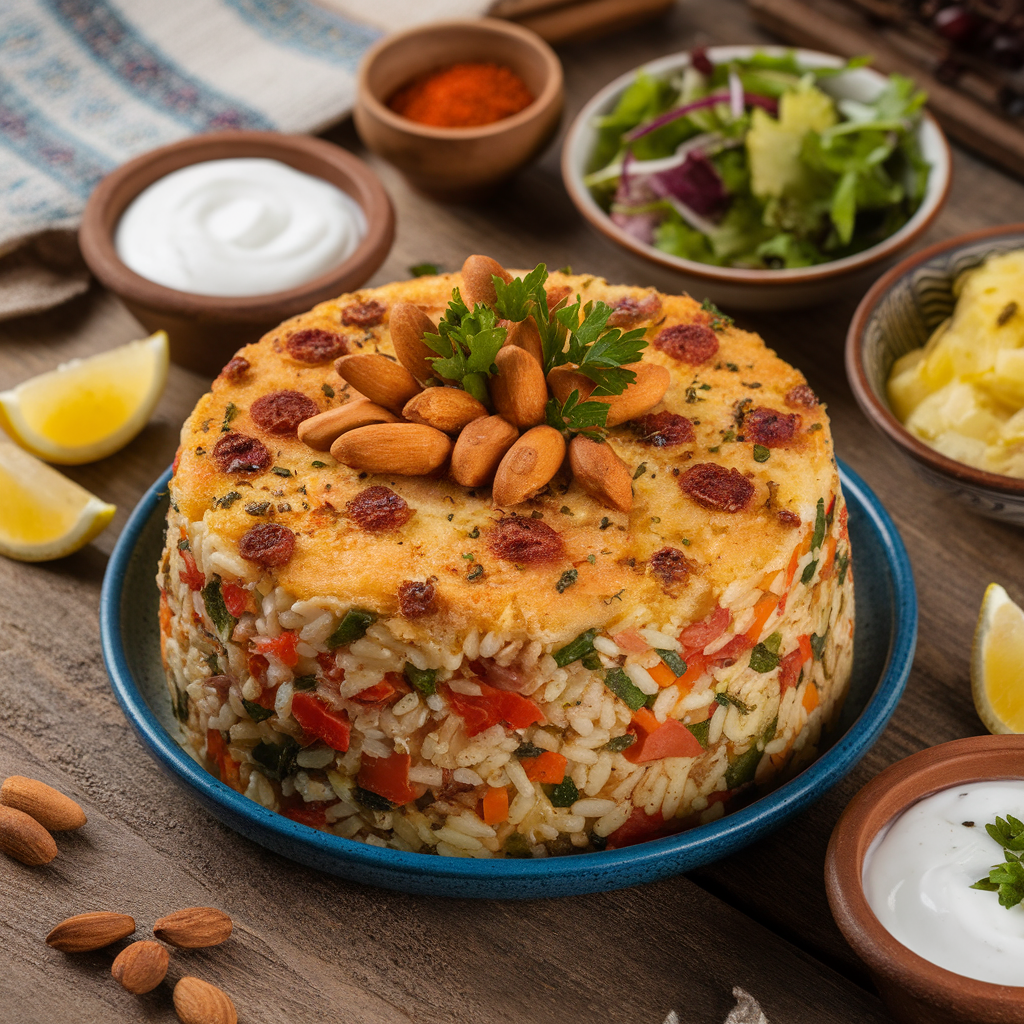
Key Ingredients for the Makloubeh Recipe
To make an authentic Makloubeh, you’ll need a few key ingredients that form the foundation of the dish. Here’s a breakdown of the essential components:
- Medium Grain Rice: The backbone of the dish, medium-grain rice is perfect for absorbing the flavorful broth that is created during cooking. It remains tender and slightly sticky, holding all the flavors together. Make sure to wash the rice thoroughly to remove excess starch, which can make it clumpy. The rice used in Makloubeh is crucial to the texture, so be sure to choose a high-quality medium-grain rice to achieve the best results.
- Chicken (or Meat): While chicken is the most common protein choice for Makloubeh, lamb is also a popular alternative. The meat is typically browned and then cooked with the rice, releasing its natural flavors into the dish. Chicken thighs are often preferred because of their rich, juicy flavor, but chicken breasts can also be used for a lighter version. For a more indulgent version, lamb can be used, adding a deeper, richer flavor.
- Potatoes: Potatoes, often sliced into thick rounds, are fried until golden and crispy, then layered in the bottom of the pot. They provide a wonderful contrast in texture to the soft rice and succulent chicken. Potatoes are essential to Makloubeh’s appeal, as their crispy texture provides a satisfying crunch that complements the tenderness of the rice and meat.
- Eggplant: Eggplant is another vegetable that is frequently used in Makloubeh. It can be fried or grilled to bring out its smoky flavor and soft texture. Some variations may also include cauliflower, carrots, or tomatoes. Eggplant, with its subtle bitterness and rich texture, is a perfect counterpart to the other ingredients. It helps to balance the flavors and adds an extra dimension to the dish.
- Spices: The dish is seasoned with a variety of spices, including cinnamon, allspice, cumin, and turmeric, which give it its distinct Middle Eastern flavor. The addition of bay leaves and a pinch of saffron (optional) further elevates the dish’s taste. These spices are what make Makloubeh unique, and they give it that warm, comforting aroma that fills the kitchen as it cooks. Some recipes may also include a touch of cardamom or cloves for an additional layer of flavor.
- Broth: Chicken broth or a combination of broth and water is essential for cooking the rice. The broth infuses the rice with flavor, making every grain delicious. If you want to intensify the flavor, you can use a homemade chicken broth, or for a quicker option, store-bought broth works perfectly well.
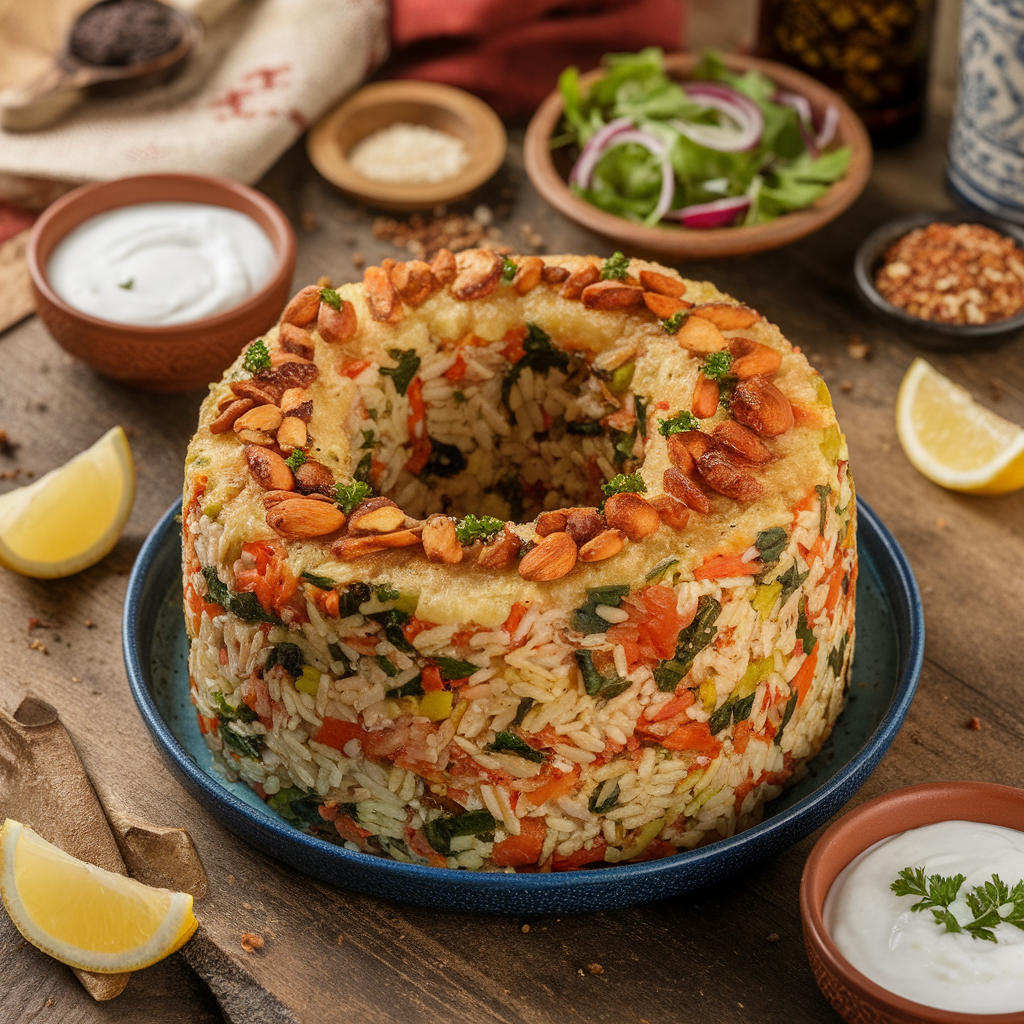
How to Make Makloubeh
Step 1: Prepare the Chicken
Start by preparing your chicken. Cut it into pieces and season it with salt, pepper, and spices such as cinnamon and allspice. In a large pot, heat some oil and brown the chicken pieces on all sides. This step adds flavor and helps to lock in moisture. Once browned, remove the chicken from the pot and set it aside.
While browning the chicken, you may also choose to add onions and garlic to the pot to create a flavorful base for the dish. These aromatics will enhance the overall flavor profile of the Makloubeh, but they’re optional and depend on your personal preferences.
Step 2: Fry the Potatoes and Eggplant
Next, prepare the vegetables. Slice the potatoes into thick rounds and fry them in hot oil until they are golden and crispy. Repeat the process for the eggplant. If you prefer a healthier option, you can bake the vegetables instead of frying them. Frying gives them a golden, crispy texture that contrasts wonderfully with the soft, fluffy rice and tender chicken.
If you’re adding other vegetables like cauliflower, you can fry or sauté them to your liking. The key is to give them some color and caramelization, which will add depth to the flavor of the dish.
Step 3: Layer the Ingredients
Now that your vegetables are ready, it’s time to assemble the Makloubeh. Begin by placing the fried potatoes at the bottom of the pot to form a base layer. Next, add a layer of chicken pieces on top of the potatoes. If you’re using eggplant or any other vegetables, add them in layers on top of the chicken.
Once your layers are in place, sprinkle the rice evenly over the top. Make sure to level it out to ensure even cooking. Add the spices to the rice, including cinnamon, allspice, cumin, and turmeric. You can also place a couple of bay leaves in the rice for added fragrance.
Step 4: Add the Broth
Pour in enough chicken broth (or a combination of broth and water) to cover the rice by about an inch. The liquid will cook the rice and infuse it with flavor. Bring the liquid to a boil, then reduce the heat to low and cover the pot. Let it simmer for about 30–40 minutes, or until the rice is fully cooked and has absorbed all the flavors.
During cooking, you may choose to occasionally check the pot and gently stir to prevent any burning at the bottom. However, be careful not to disturb the layers too much. The goal is to create a beautifully caramelized crust on the bottom that will be revealed when the pot is flipped.
Step 5: Flip the Makloubeh
The most dramatic and exciting step in making Makloubeh is flipping the pot. Once the rice is cooked and the liquid has been absorbed, carefully place a large serving plate or tray over the pot. With a quick, confident motion, flip the pot upside down. Gently lift the pot off the rice, revealing the beautifully caramelized layers of vegetables and rice.
The golden, crispy crust formed on the bottom of the pot becomes the top of the dish, creating an impressive presentation. The rice will hold together in a perfect cake-like shape, with the vegetables and chicken arranged in a beautiful pattern.
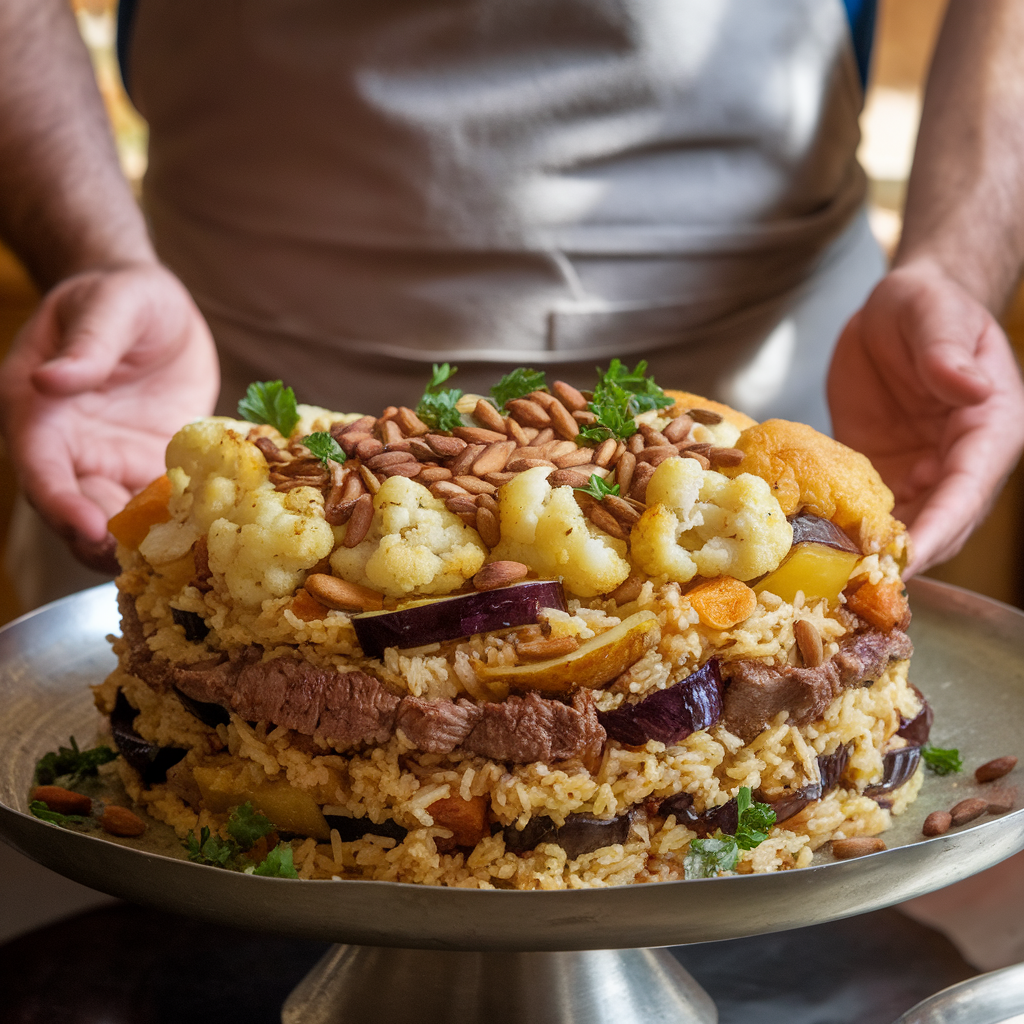
Serving Makloubeh
Makloubeh is often served with a side of yogurt or a fresh salad. The yogurt helps to balance the richness of the dish, while the salad adds a light, refreshing contrast. In some regions, people also like to drizzle a little olive oil on top of the finished dish for added flavor.
For an added touch, garnish the dish with toasted almonds, pine nuts, or even fresh parsley. These garnishes add texture and freshness to the dish, elevating its visual appeal.
This dish is often served family-style, with everyone gathered around to enjoy the meal together. It’s not just a recipe; it’s an experience that brings people together over a shared love of food.
Makloubeh Variations
While the basic recipe for Makloubeh remains the same, there are several regional variations and personal twists you can experiment with:
- Lamb Makloubeh: Swap the chicken for lamb for a richer, more flavorful version of this dish. The lamb adds depth to the flavor profile and makes the dish even more indulgent. If using lamb, make sure to cook it until it’s tender, as lamb can sometimes be tougher than chicken.
- Vegetarian Makloubeh: For a vegetarian version, simply omit the meat and use extra vegetables like carrots, cauliflower, and bell peppers. The flavor from the vegetables and the broth will still make this dish incredibly delicious. If you want to add some protein, you could include chickpeas or lentils.
- Spiced Up Makloubeh: If you like a bit of heat, consider adding chili peppers or a dash of cayenne pepper to the rice while it’s cooking. This will add a little kick to the otherwise mellow flavors. You can also experiment with different spice blends, such as za’atar or sumac, to give the dish a unique twist.
Health Benefits of Makloubeh
Makloubeh is not only a flavorful dish but also offers several health benefits, depending on the ingredients you choose. Here are a few reasons why you should enjoy this dish:
- Chicken: As a lean source of protein, chicken is a great addition to any meal. It provides essential amino acids needed for muscle repair and growth.
- Vegetables: Potatoes and eggplant are rich in fiber, vitamins, and antioxidants. These vegetables can help improve digestion and support overall health.
- Rice: While rice is a carbohydrate, it provides energy and is a good source of several important minerals, including magnesium and manganese.
- Spices: The spices used in Makloubeh, like cinnamon, cumin, and turmeric, have anti-inflammatory properties and can promote digestive health.
Conclusion
Makloubeh is a beautiful representation of Middle Eastern food, blending tender chicken, crispy vegetables, and perfectly cooked rice in a dish that is as satisfying to the soul as it is to the taste buds. The combination of spices, textures, and flavors makes it a dish that’s beloved across the Middle East and beyond. Whether you call it Makloubeh, Maqlooba, or Maklouba, one thing is clear—this Arabian rice dish is a must-try for anyone who loves Middle Eastern cuisine.
So next time you’re craving a comforting meal with a touch of the exotic, give this recipe a try. The results will not only be delicious but will transport you to the vibrant, flavorful world of Syrian food and Middle Eastern food traditions. Whether you’re serving it at a family gathering or simply enjoying a weeknight meal, Makloubeh is sure to impress and satisfy all who are lucky enough to share in the experience.

